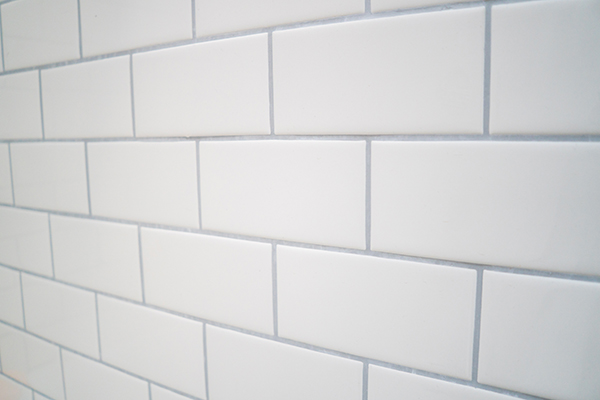Top Reasons Your Painted Tiles Keep Chipping and Peeling (and How We Prevent It)
If you’re reading this, chances are you’ve experienced firsthand how frustrating painted tiles can become when they start chipping or peeling prematurely. Maybe you’ve had your tiles painted before and were disappointed when they didn’t hold up as expected, or perhaps you’re considering tile painting and worry about these exact issues. As a professional tile refinisher who’s served New Jersey homeowners for over a decade, I’ve seen plenty of tile painting jobs gone wrong. Understandably, you’re cautious—after all, nobody wants to invest money into their home only to see the results chip and peel soon after.
 Here’s the truth: painted tiles don’t have to chip, peel, or blister if done right. Unfortunately, many tile painting jobs fail because corners were cut, crucial steps were missed, or inexperienced hands handled the project. Let’s identify exactly why painted tiles typically fail and why professional refinishing is essential for lasting results.
Here’s the truth: painted tiles don’t have to chip, peel, or blister if done right. Unfortunately, many tile painting jobs fail because corners were cut, crucial steps were missed, or inexperienced hands handled the project. Let’s identify exactly why painted tiles typically fail and why professional refinishing is essential for lasting results.
Poor Surface Preparation: The Single Biggest Reason Tile Paint Fails
Almost every failed tile painting job comes back to inadequate surface preparation. Tiles aren’t like drywall or wood—they naturally resist paint adhesion. If your tiles weren’t professionally prepared, you’ll inevitably see peeling or chipping within months or even weeks. Here’s specifically how poor preparation ruins painted tiles:
- Failure to Remove Contaminants:Even small amounts of soap residue, grime, oils, or old caulk can cause paint adhesion issues. These contaminants aren’t always visible, and if they’re not expertly removed, the paint won’t bond.
- Insufficient or Incorrect Sanding:Tiles typically have smooth, glossy surfaces. Without careful sanding or chemical etching—something an inexperienced painter might skip or rush—primer and paint layers never achieve a proper grip. This directly leads to paint flaking or peeling under normal use.
- Hidden Moisture Problems:If tiles aren’t thoroughly dried or inspected for moisture beforehand, trapped dampness under paint layers quickly turns into blistering or bubbling paint.
At A-1 Tub & Tile, our refinishing process always starts with meticulous surface preparation—thorough cleaning, sanding, drying, and inspection for moisture—to guarantee paint adhesion and lasting results.
How Moisture Leads to Blistered and Peeling Paint (And Why DIY Solutions Fail Here)
Bathroom tiles constantly battle moisture from showers, tubs, and sinks. Many homeowners underestimate just how challenging moisture management is when painting tiles. Paint coatings are inherently less resistant than original tiles, requiring expert application techniques to withstand constant moisture exposure. Here’s why moisture ruins painted tiles without professional care:
- Paint Blistering:If even small amounts of water seep behind improperly sealed or inadequately painted tiles, moisture expands beneath paint layers, causing blistering and peeling. This is extremely common in DIY or non-professional projects.
- Standing Water Damage:Grout lines and tile edges accumulate water easily. Inexperienced tile painting jobs rarely adequately address these vulnerabilities, leaving the paint prone to peeling and chipping in wet environments.
Our professional refinishing method uses specialty tile paints, expert application techniques, and proper sealing to ensure your painted tiles withstand daily moisture exposure far better than DIY or inexperienced efforts.
Heavy Traffic Means Quick Wear (Unless Done Right)
Many homeowners ask about painting floor tiles. It’s understandable—they’re highly visible and replacing floor tiles can seem expensive. But let’s be very clear: floor tiles face constant friction, foot traffic, and abrasion, making them highly challenging surfaces for paint. Here’s precisely why paint fails on floors without professional refinishing expertise:
- Constant Abrasion:Foot traffic around toilets, entryways, and sinks wears down painted floors fast. Typical paint—even advertised DIY floor paint kits—can’t withstand everyday friction unless applied meticulously.
- Impact Damage and Scratches:Dropped shampoo bottles, razors, or household objects easily chip painted surfaces if not professionally applied with durable products.
Our recommendation at A-1 Tub & Tile is always to carefully evaluate floor tiles before painting. If we determine painting is viable, we use premium epoxy-based coatings explicitly designed for floor tiles, properly applied and cured to give your floor the greatest possible durability.
Using Incorrect or Low-Quality Products Almost Guarantees Failure
You might think any tile paint or refinishing kit would do the job, but the products chosen for tile refinishing directly influence durability. Many DIY kits and non-specialized painters rely on inferior products that virtually guarantee chipping or peeling within months. Here’s how inferior products fail:
- Low-Quality Paints:Generic latex or acrylic paints will fail quickly on tile surfaces. Some paints marketed as “tile paint” aren’t sufficient for daily wear, moisture, and cleaning.
- Skipping Specialized Primers:Tiles require specialized bonding primers specifically formulated for non-porous surfaces. Generic primers simply don’t adhere properly, causing inevitable peeling.
At A-1 Tub & Tile, we exclusively use specialized epoxy or enamel coatings and bonding primers specifically formulated for tile refinishing. These products and professional application techniques ensure your refinished tiles resist peeling, chipping, and damage for significantly longer periods.
Application Errors by Non-Professionals Lead to Early Damage
Painting tiles isn’t like painting drywall—it’s a specialized process. Non-professionals often make application errors such as applying paint too thickly, failing to allow adequate curing time, or using inappropriate painting tools. Here’s why professional application matters:
- Thin, Even Coats Required:Thick paint layers dry unevenly, remain soft beneath the surface, and chip or peel quickly. We always apply multiple thin, even coats, ensuring each dries properly for maximum durability.
- Proper Curing Time Essential:Tile paint must fully cure before exposure to moisture or traffic—often days, not hours. Homeowners and inexperienced painters usually rush this, resulting in damage almost immediately after painting.
As professional refinishers, we strictly adhere to correct application and curing protocols, ensuring your refinished tiles stay beautiful far longer than amateur attempts.
Painted Tiles Require Proper Maintenance—But Not Excessive Care
Even the most carefully refinished tiles need proper care. However, professionally applied coatings won’t require special cleaning solutions or delicate handling—just sensible precautions. Here’s exactly how you maintain professionally painted tiles easily:
- Use Mild Cleaning Products:Avoid harsh chemicals or abrasive pads. A soft cloth with gentle soap perfectly cleans professionally painted tiles without causing premature wear.
- Keep Tiles Dry When Possible:Wipe excess water from painted tile surfaces promptly. This simple habit greatly extends paint durability, especially in bathrooms.
When properly maintained, professionally painted tiles typically last several years without significant wear or damage.
Why Professional Tile Refinishing is the Smart Investment in NJ Homes
Painted tiles done incorrectly fail quickly, creating frustration and extra costs. However, tiles professionally refinished by our expert team at A-1 Tub & Tile avoid common mistakes that cause premature chipping and peeling. Our specialized methods, premium materials, and meticulous preparation ensure your tiles look attractive and remain durable far longer.
If you’re tired of disappointing DIY results or subpar refinishing jobs, we’re here to offer a lasting, attractive solution. Contact us today at 908-705-2999 to discuss how our professional tile refinishing can transform your home and keep your tiles looking great for years to come.

